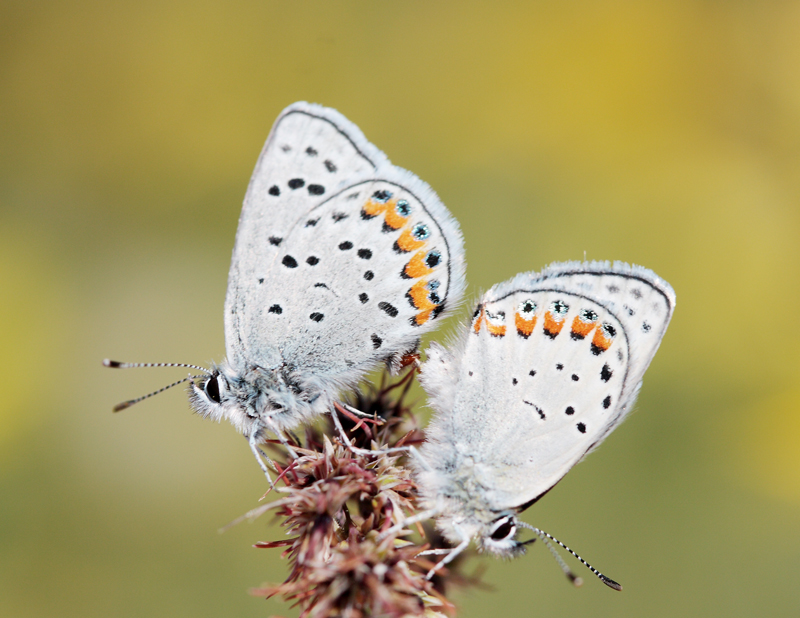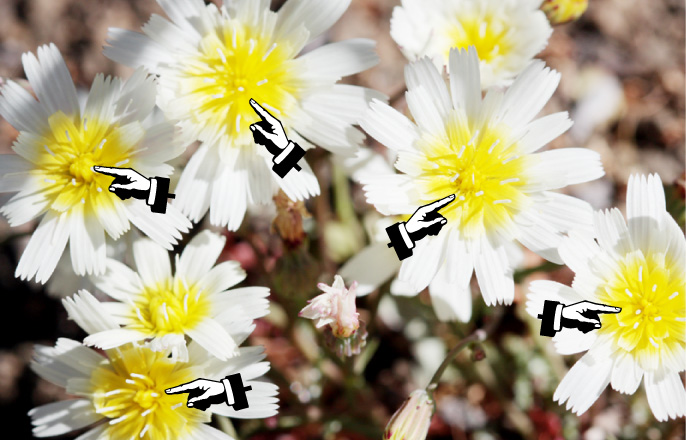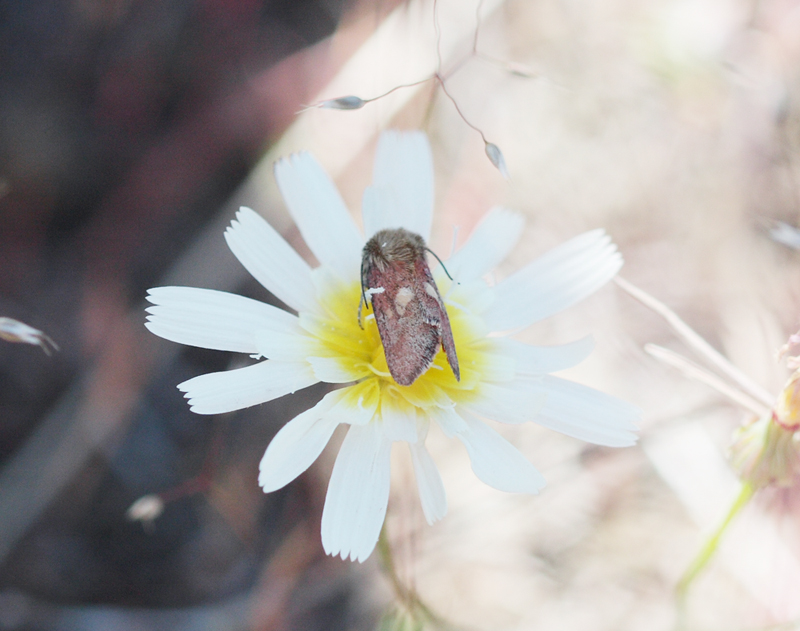Durant els últims quatre caps de setmana ara que he estat en una recerca inútil, per a una arna, Speedy Heliolonche. És una bella petita Noctuidae amb ales anteriors de color rosat i unes ales posteriors de color vermell ataronjat. No es troba molt sovint i només es troba al llarg de les serres muntanyoses del nord de Califòrnia alimentant-se Malacothrix floccifera – una flor endèmica CA. Cada viatge m'he enganxat, fins avui – N'he recollit dos! Com recordareu, la meva primera sortida va ser fa aproximadament un mes, cap arna, però una bonica sèrie d'exemplars i fotografies de l'Adela arnes. Els últims viatges ni tan sols han arribat a ser tan productius com el d'Adela. Què fer, doncs, quan no trobeu el vostre objectiu? Feu-vos una cremada de sol i feu unes fotos de mal humor.
 Atrapat en l'acte. Plebea ACMO
Atrapat en l'acte. Plebea ACMO
(va continuar a continuació)
No gaire arna.
 Sense arna, cap arna, cap arna…
Sense arna, cap arna, cap arna…
UNA POLLA!
Això H. celeris està mostrant un comportament típic de l'arna de les flors, assegut al cap de la flor com el dia. De fet, es queden així tota la nit a la flor (encara que es tanqui al seu voltant com ho fan algunes flors – la qual cosa fa que col·loquialment siguin coneguts com “arnes del tac”… perquè el cul de l'arna s'enganxa més enllà dels pètals i sembla que estigui en un tac). I per això vaig deixar el meu apartament a 6 soc aquest matí per arribar 8. Si encara fa fred fora, ni tan sols es treuen quan t'acostes. I, si no volen, és fàcil estudiar una zona per a les arnes i saber que no us n'heu perdut cap. Però, tan bon punt el sol els escalfa, es converteixen en uns bastards i s'esvaeixen abans que puguis arribar a la tapa de la lent. Al ser aquesta la primera arna que vaig veure avui, realment no he fet l'esforç de fer una gran imatge. Els subjectes tenen el mal costum de volar just després de fer la bona presa (bé, generalment just abans del bon tir)… i no em podia arriscar a perdre l'únic exemplar del dia.



Where’s the “like” button? Great pics and good commentary.
“Sense arna, cap arna, no moth…”
Ha. I lol’d.
It is a pretty little thing…
A colorful, day-flying moth that sits prominently in the center of flowers – chemical defenses?
Aquesta és una bona pregunta, and it has crossed my mind before. There a lot of these small day flying flower moths that are clearly not cryptic yet I haven’t ever read about any chemical defenses or mimicry. I also don’t think of Malacothrix as a particularly noxious plant… will investigate.
Bé, now I have to post the latest mystery moth pics I took a few days ago. (4/30) Pretty please if you have a moment, check it out and render your sage opinion. !
Ted’s question has nagged me this week. I’ve never heard of anyone studying this, però… Has anyone seen these flower moths under UV? See a related flower species under UV here: http://www.naturfotograf.com/UV_SENE_AQU.html. Pot ser, while sitting on the bulls-eye, these moths become “invisible” to predators who see UV, such a birds. The added bonus for the moths is this might increase their chances of finding a mate which is attracted to the UV bulls-eye.
You have to be right about that Katie, I’ve been thinking about this too. I can’t recall any literature in reference to adult insect UV crypsis. There is some work in regards to caterpillars… but I’ll have to do some more digging. Birds are probably not the primary predator on these moths since their acute vision makes them incredibly difficult to approach in the daytime. Però, most lizards see in UV and these flowers are just about at head level for most small reptiles (and there were a ton on site).
Sometimes, the light bulb just turns on.
So there is a monograph to this subfamily – and in there Hardwick (author) points out the counterintuitive crypsis of this moth! Instead of a good idea he postulates
Així, he just assumes they are oddities because the flowers changed without them and they survived “possibly because of a decrease in predation pressure”.
Seems to me that UV crypsis is much more likely. I… I don’t believe that’s been shown in adult Lepidoptera. Add it to the list!
; ) Just make sure you credit me for this idea when you become the ruler of the universe, és… recognized expert on lepidopteran UV crypsis. I’m glad you looked it up. Please let me know if you find out any more info.